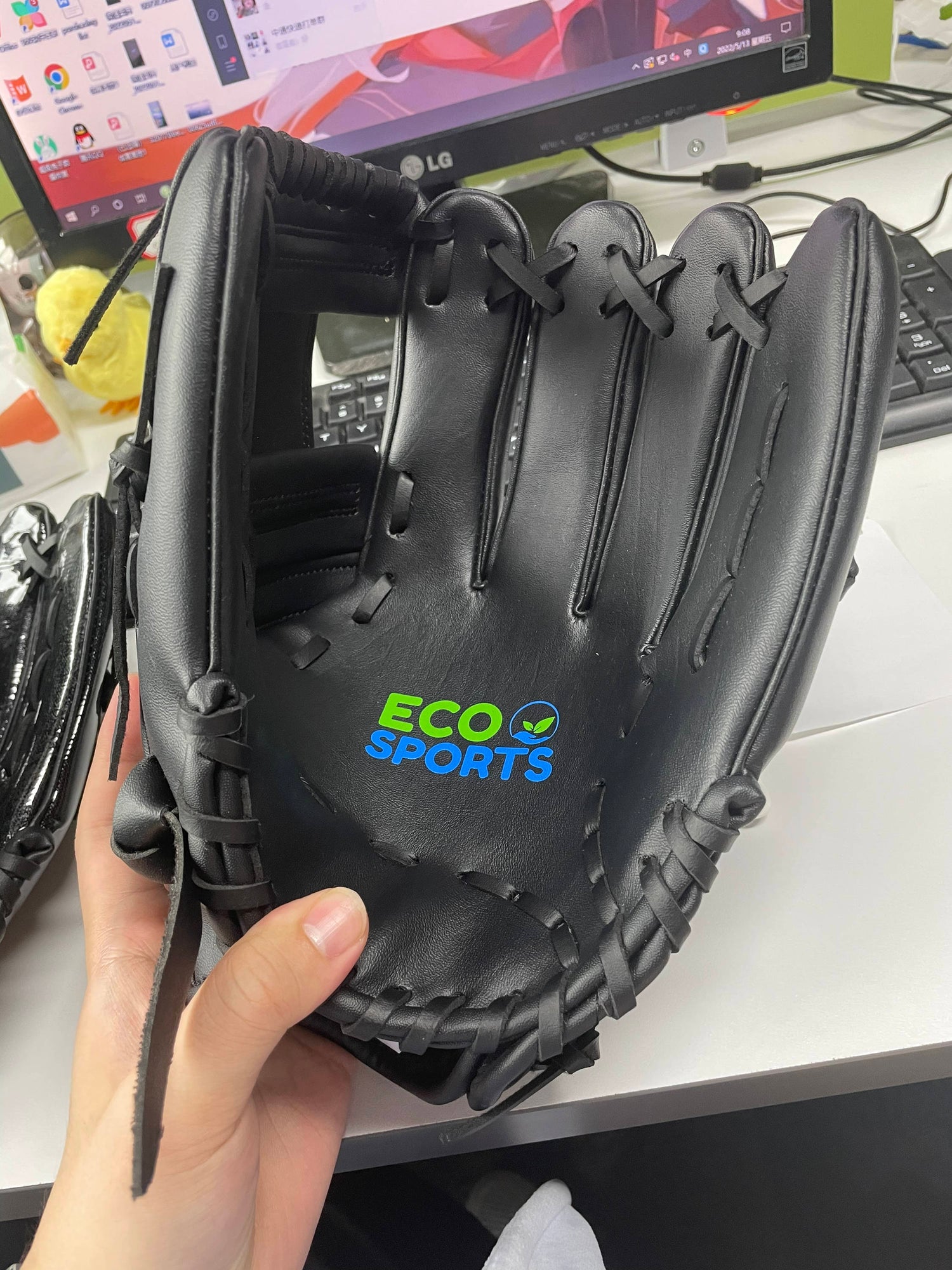To relace a baseball glove, you’ll need about 6 to 8 feet of lace. This amount can vary based on the glove’s size and design.
Relacing a baseball glove is a task many players face. Over time, the original laces wear out and need replacing to keep the glove in good shape. Knowing how much lace you need is crucial to avoid starting the job with too little material.
This guide will help you determine the right amount of lace for your glove. You’ll also learn why it matters and how to measure it accurately. Let’s ensure your glove is game-ready with the right amount of lace.
Introduction To Relacing
Relacing a baseball glove can breathe new life into your favorite gear. Over time, the laces in your glove may wear out and break. This impacts the glove’s performance and longevity. Relacing is a crucial maintenance task for any serious player.
Importance Of Proper Relacing
Proper relacing ensures your glove performs at its best. It helps maintain the glove’s shape and function. Well-laced gloves provide better control and grip. This can improve your game performance. Neglecting relacing can lead to more wear and tear.
Relacing also extends the life of your glove. It prevents the leather from stretching too much. This keeps the glove snug and comfortable. Proper relacing can save you money. You won’t need to buy a new glove as often.
Signs Your Glove Needs Relacing
Loose or broken laces are a clear sign. If you see frayed or snapped laces, it’s time to relace. Check the pocket and webbing. They should be tight and secure.
Another sign is a change in shape. If your glove feels floppy or misshapen, relacing can help. Pay attention to the glove’s performance. If it doesn’t hold the ball well, the laces might be the issue.
Regularly inspect your glove. Catch problems early to keep your glove in top shape. Relacing is a small task with big benefits.
Materials Needed
Relacing a baseball glove can breathe new life into it. It’s important to have the right materials to get the job done. This section will cover the materials you’ll need, focusing on the types of lace and additional tools required.
Types Of Lace
Choosing the right lace is crucial for relacing your glove. Here are some common types:
- Standard Leather Lace: The most common type, usually 3/16 inch wide.
- Wide Leather Lace: Offers extra durability, often 1/4 inch wide.
- Colored Lace: Adds a personal touch, available in various colors.
You can purchase these laces in different lengths. Typically, you need about 6-8 feet of lace for an infield glove and 8-10 feet for an outfield glove.
Additional Tools Required
Besides the lace, you will need some additional tools to relace your glove:
- Lacing Needle: Helps thread the lace through tight spaces.
- Scissors: Used to cut the lace to the required length.
- Glove Mallet: Helps soften and shape the glove after relacing.
- Leather Conditioner: Keeps the leather soft and pliable.
Having these tools will make the relacing process easier and more efficient. With the right materials, you can give your glove a new lease on life.
Measuring The Lace
Measuring the lace for relacing a baseball glove is crucial. It ensures you have enough material for the entire process. Accurate measurements help avoid any interruptions while relacing. Below, we’ll delve into standard measurements and how to adjust for different glove sizes.
Standard Measurements
Most baseball gloves need about 60 to 72 inches of lace. This measurement works for average-sized gloves. Some gloves might need a bit more. Better to have extra lace than run out midway.
Adjusting For Glove Size
Not all gloves are the same size. Larger gloves, like those used by outfielders, need more lace. They might need up to 80 inches. Smaller gloves, such as those used by infielders, require less lace. About 60 inches should suffice.
Measure your glove to be sure. Start from the wrist and follow the lacing path. This gives a clear idea of how much lace is needed. Always add a few extra inches. This allows for errors or adjustments during the relacing process.

Credit: www.baseballmonkey.com
Removing Old Lace
Removing the old lace from your baseball glove is an essential step. It ensures the new lace fits well and the glove performs at its best. Follow these steps to remove the old lace efficiently.
Step-by-step Process
First, locate the end knots of the lace. Use a pair of scissors to cut these knots. Pull the lace gently from the holes to avoid tearing the leather. Continue until all the old lace is removed.
Pay close attention to the pattern. Take notes or photos to remember the lacing path. This will help you when it’s time to re-lace.
Tips For Easy Removal
Soften the old lace before removal. Use a damp cloth to moisten it. This makes pulling it out easier and reduces the risk of damaging the glove.
Use a lacing tool or a sturdy needle to help remove the lace. Insert the tool into the holes to push the lace out. This makes the process faster and less frustrating.
Work in a well-lit area. Good lighting helps you see the lacing pattern clearly. It also prevents mistakes, saving you time in the long run.
Lacing Techniques
Relacing a baseball glove can breathe new life into it. Whether you’re fixing broken laces or upgrading the glove’s look, knowing the right lacing techniques is crucial. Proper lacing ensures the glove fits well and performs optimally. Let’s explore some common patterns and custom lacing styles.
Common Patterns
Most baseball gloves use standard lacing patterns. These patterns offer a balance of support and flexibility. The most common patterns are:
- H-Web: This pattern features an “H” shape. It’s often used in outfield gloves.
- I-Web: This pattern has an “I” shape. It’s popular in infield gloves.
- Modified Trapeze: This pattern includes extra loops for added strength. It’s ideal for pitchers.
Each pattern has its benefits. Choose one based on your position and style of play. Let’s look at custom lacing styles next.
Custom Lacing Styles
Custom lacing styles allow players to personalize their gloves. These styles can improve the glove’s performance. Some popular custom styles include:
| Style | Description |
|---|---|
| Basket Weave: | This style uses a crisscross pattern. It provides extra support. |
| Dual Post: | This style features two vertical posts. It offers better control and flexibility. |
| Single Post: | This style has one vertical post. It’s lightweight and easy to break in. |
Custom lacing styles give a unique touch to your glove. They also enhance its performance. Select a style that suits your needs and preferences.
Securing The New Lace
Securing the new lace in your baseball glove is crucial. It ensures your glove stays functional and reliable. Proper lacing affects how well you can catch and control the ball. This guide will help you tie knots and ensure durability.
Tying Knots
Start by threading the lace through the first hole. Pull it tight to remove any slack. Make a simple knot at the end to secure it. This prevents the lace from slipping out. Continue threading the lace through the rest of the holes. Each hole should be tight and secure. Finish with another knot at the end.
Ensuring Durability
Use high-quality leather lace for best results. Leather is strong and lasts longer. Check the lace regularly for any signs of wear. Replace it if it looks frayed or weak. This keeps your glove in top condition. Tighten the lace periodically to maintain its strength. A well-laced glove performs better and feels more comfortable.
Maintaining Your Relaced Glove
Relacing your baseball glove can give it a new life. Yet, maintaining it is crucial for longevity. Regular care ensures your glove stays in top shape. This section covers essential tips for keeping your relaced glove in excellent condition.
Regular Inspections
Inspect your glove regularly. Look for wear and tear. Check the laces for any signs of fraying. Ensuring they are not too loose or too tight is key. Worn-out laces can affect your performance.
- Examine the webbing
- Check the fingers
- Look at the pocket
If you spot any issues, address them immediately. A small problem can become big if ignored. Regular inspections keep your glove reliable.
Proper Storage
Storing your glove properly is essential. Avoid leaving it in extreme temperatures. Heat can dry out the leather. Cold can make it stiff.
Store your glove in a cool, dry place. Use a glove wrap to maintain its shape. Avoid placing heavy items on it. This can deform the glove.
Consider the following tips for storage:
- Keep it clean and dry
- Use a glove conditioner
- Store it with a ball in the pocket
Proper storage extends the life of your glove. It keeps it ready for the next game.

Credit: ecosports.com

Credit: www.justballgloves.com
Frequently Asked Questions
How Much Lace Is Needed To Relace A Baseball Glove?
Typically, you’ll need about 6-8 feet of lace for relacing. This amount can vary based on glove size.
What Type Of Lace Is Best For Baseball Gloves?
Leather laces are the most durable and preferred for baseball gloves. They offer better performance and longevity.
Can I Relace A Baseball Glove Myself?
Yes, you can relace a glove yourself with the right tools and guidance. It requires patience and practice.
How Often Should You Relace A Baseball Glove?
Relace your glove every 1-2 years, depending on usage. Regular maintenance ensures optimal performance.
Conclusion
Knowing how much lace is needed saves time and frustration. Measure your glove first. Choose quality lace for durability and performance. Follow the steps carefully for a tight, secure fit. Relacing your glove can extend its life and improve play.
Keep practicing and enjoy your game!

I’m Darrell Boyd, and I live and breathe baseball. As an ardent aficionado of the game, I have established myself as a respected figure in the baseball community through my dedicated blog and insightful contributions to the sport.
Through my blog, I strive to offer comprehensive baseball guides, tips, and tricks that cater to players of all skill levels. Additionally, I provide detailed reviews of crucial baseball products and elements, giving my readers an expert’s perspective on what truly matters in the world of baseball.
With a deep understanding of the sport’s technical intricacies and strategic nuances, I go beyond surface-level analysis, delving into the finer points that define successful gameplay. My meticulous attention to detail and unwavering commitment to excellence have made me a trusted resource for players, coaches, and fans looking to deepen their knowledge and appreciation of the game.
I am dedicated to fostering a thriving baseball culture and am passionate about sharing my wealth of insights with a growing community of fellow enthusiasts. My mission is to continue inspiring and educating others, leaving a lasting impact on the sport that resonates with millions across the globe.
